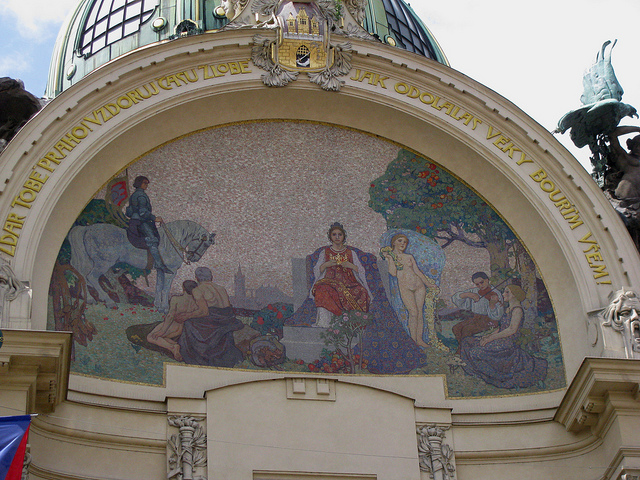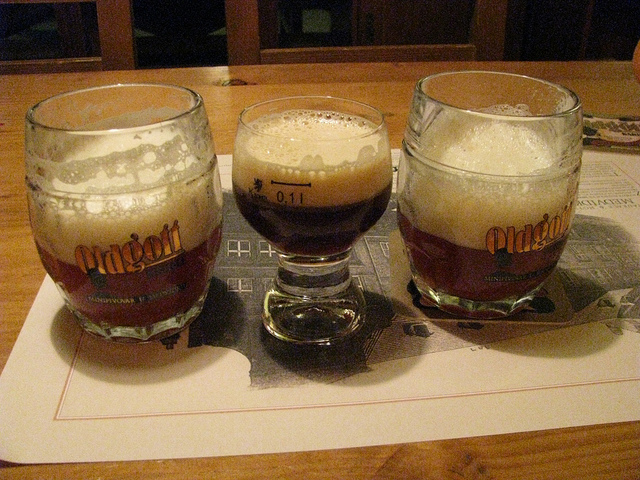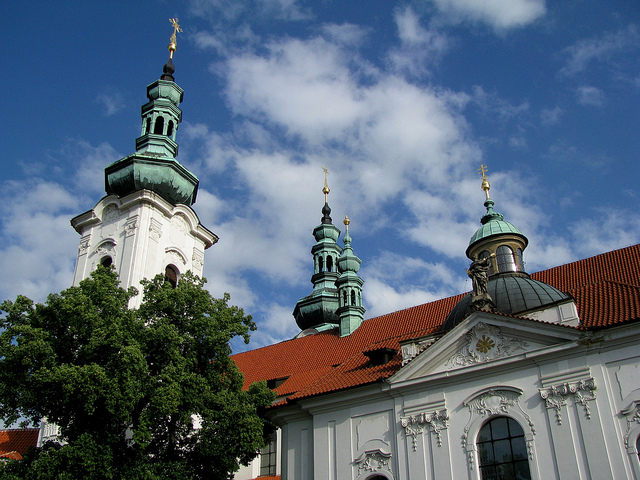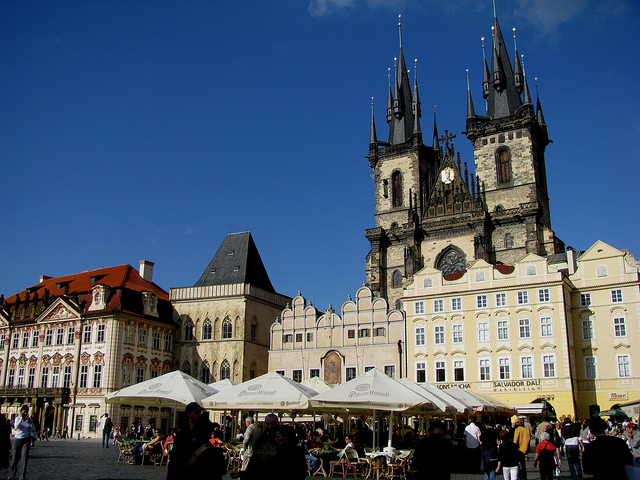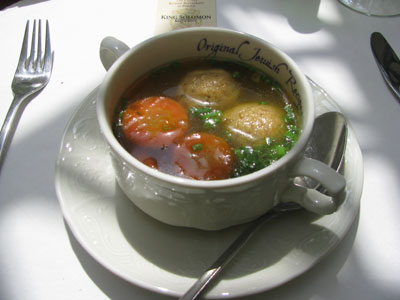After an introduction to kosher food and after sampling some Krupnik and Gefilte Fish, I thanked Michal Günsberger for his culinary education and for his hospitality at the King Solomon Restaurant. Richard, my tour guide, who had already taken me on a tour through Prague’s Jewish Quarter in the morning, kindly offered to accompany me through Old Town past a number of Prague’s landmarks. The Powder Gate, whose foundation stone was laid in 1475, used to be one of Prague’s city gates in the Middle Ages and became part of the Royal Coronation Route to Prague Castle. This medieval tower was indeed used to store gunpowder in the 17th century.

Prague’s Powder Gate
The east side of the Powder Tower opens up to a big public space called Republic Square which is home to the Czech National Bank and the famous Hybernia Theatre. The most impressive jewel on Republic Square is the Municipal House, Prague’s most spectacular Art Nouveau building and a national landmark.

Municipal House, Prague’s Art Nouveau masterpiece
Municipal House was constructed between 1905 and 1912 on the site of the former Royal Court palace, which used to be the residence of the Czech kings in the 14th and 15th century, This palace stood abandoned for centuries, and was later turned into a seminary and a military hospital. Finally, in the early 1900s, the decision was made to demolish it and to build the stunning Art Nouveau masterpiece that still stands today.

Detailed fresco on the front facade of Municipal House
The exterior of Municipal House impresses with its detailed stone carvings, gold trimmings and stained glass windows. Magnificent frescos adorn the façade, and allegorical figures represent historical and cultural symbols of the Czech nation. A huge semi-circular mosaic called Homage to Prague embellishes the central entrance area of this magnificent structure.

Smetana Hall
I joined the 2 o’clock guided tour and our young guide explained the various interior details of this structure. The most impressive space is Smetana Hall, a concert hall holding 1200 seats that is named after Bedrich Smetana, a famous Czech composer of the late 1800s who pioneered a nationalistic musical style that coincided with the Czech country’s desire for independence from the Habsburg Empire. An impressive glass dome covers Smetana Hall and floods this performance venue with natural light.

The famous composer, Bedrich Smetana
Our guide took us through a variety of smaller meeting rooms, many of which were featuring authentic early 1900s furniture. Every room was copiously adorned with Art Nouveau details and many of the meeting rooms also featured painted ceilings.

Gorgeous Art Nouveau detailing
Numerous famous Czech painters participated in the decoration of Municipal House, most famously Alfons Mucha, the most well-known Czech Art Nouveau artist. His most renowned work is the Mucha window at St. Vitus Cathedral, a stained glass masterpiece in brilliant colours. At Municipal House, Mucha painted the mayor’s hall and his vivid wall paintings are perfectly preserved and cover the entire room and the ceiling.

Gorgeous wall paintings by Alfons Mucha
Today, Municipal House is not only one of Prague’s most popular concert venues, it also holds meeting space and several hospitality establishments. Most well-known are the American Bar in the basement and the famous first class Francouszka Restaurant on the main level which serves upscale French cuisine.

More original Art Nouveau details
